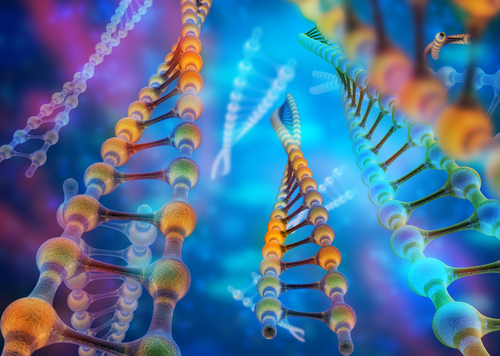FUS Mutations Likely Cause ALS by Preventing Repair of Oxidative Damage in DNA

FUS — a protein mutated in some amyotrophic lateral sclerosis patients — plays a key role in the mechanism that repairs oxidative damage in DNA molecules in motor neurons, a study found.
The findings suggest a mechanism through which FUS defects cause amyotrophic lateral sclerosis (ALS), and add to the evidence that defects in DNA repair play a major role in neurodegeneration.
The study, “Mutant FUS causes DNA ligation defects to inhibit oxidative damage repair in Amyotrophic Lateral Sclerosis,” was published in the journal Nature Communications.
Approximately one in 20 patients with genetically inherited ALS have mutations in the Fused in Sarcoma (FUS) gene, which provides instructions to make the RNA/DNA-binding protein FUS. These mutations are also found in 1 percent of sporadic ALS cases.
FUS is critical for genome maintenance, playing a role in repairing damage to the DNA. FUS interacts with multiple genome repairing pathways, but is particularly implicated in repairing double-strand breaks in the DNA — when DNA, which is made up of two complementary single strands, breaks on both strands.
However, FUS also seems to repair the damage that happens in the presence of reactive oxygen species (ROS) — thought to be one of the main causes of neurodegeneration in ALS. ROS causes some DNA bases to be oxidized and induce single-strand breaks in the DNA.
Also, when FUS is mutated, a DNA repair mechanism that is dependent on PARP enzymes is impaired, and studies have shown that this is linked to ALS-related neurodegeneration.
While its role in DNA repair is obvious, researchers still don’t know which function of FUS is critical for preventing neurodegeneration. Thus, they set out to investigate the mechanism responsible for the accumulation of DNA damage in neurons after the loss of FUS.
Researchers discovered that, in healthy neurons, PARP senses the damage generated by ROS and recruits other proteins of the repair machinery. FUS helps PARP recruiting the final protein complex.
This protein complex, called XRCC1/LigIII, plays a critical role in fixing DNA damage by sealing DNA bases together in the final repair step — a process called ligation.
As a consequence of this interaction, loss of FUS in the nucleus reduced the recruitment of XRCC1/LigIII, leading to defects in ligation of the damaged DNA.
Researchers then used two cell lines with FUS mutations — including one derived from an ALS patient — to determine whether this defect could be rescued through genome editing. Both cell lines exhibited defects in DNA ligation.
Using CRISPR-Cas9 — a well-known genome-editing technique — the team was able to rescue the ligation defects.
“Our findings uncovered a pathway of defective DNA ligation in FUS-linked ALS and suggest that LigIII-targeted therapies may prevent or slow down disease progression.”






